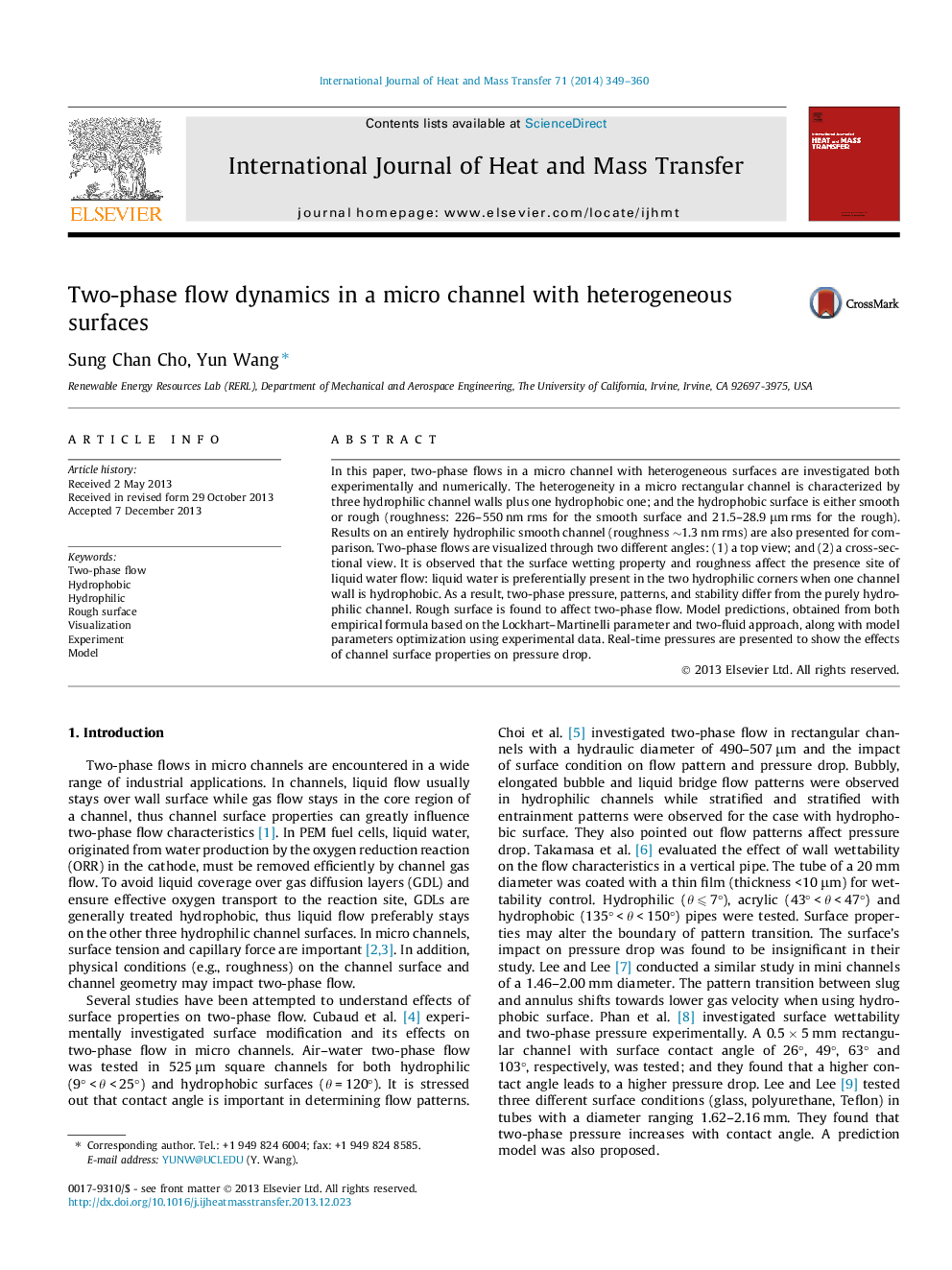| Article ID | Journal | Published Year | Pages | File Type |
|---|---|---|---|---|
| 7057614 | International Journal of Heat and Mass Transfer | 2014 | 12 Pages |
Abstract
In this paper, two-phase flows in a micro channel with heterogeneous surfaces are investigated both experimentally and numerically. The heterogeneity in a micro rectangular channel is characterized by three hydrophilic channel walls plus one hydrophobic one; and the hydrophobic surface is either smooth or rough (roughness: 226-550 nm rms for the smooth surface and 21.5-28.9 μm rms for the rough). Results on an entirely hydrophilic smooth channel (roughness â¼1.3 nm rms) are also presented for comparison. Two-phase flows are visualized through two different angles: (1) a top view; and (2) a cross-sectional view. It is observed that the surface wetting property and roughness affect the presence site of liquid water flow: liquid water is preferentially present in the two hydrophilic corners when one channel wall is hydrophobic. As a result, two-phase pressure, patterns, and stability differ from the purely hydrophilic channel. Rough surface is found to affect two-phase flow. Model predictions, obtained from both empirical formula based on the Lockhart-Martinelli parameter and two-fluid approach, along with model parameters optimization using experimental data. Real-time pressures are presented to show the effects of channel surface properties on pressure drop.
Related Topics
Physical Sciences and Engineering
Chemical Engineering
Fluid Flow and Transfer Processes
Authors
Sung Chan Cho, Yun Wang,
